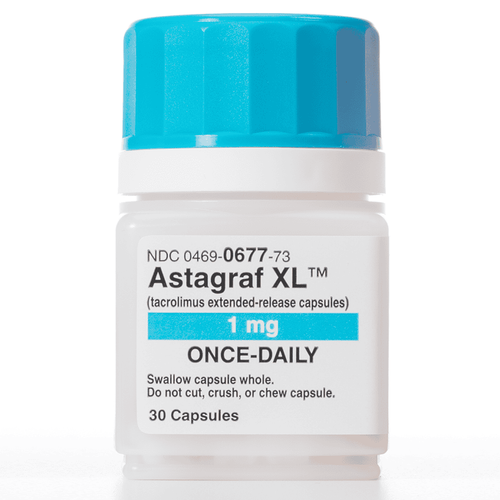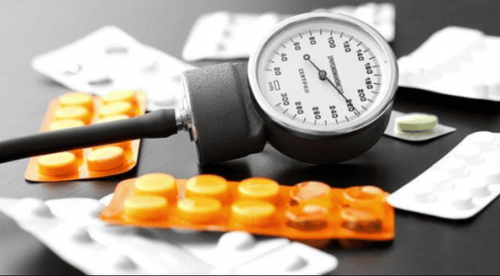This is an automatically translated article.
Combination of drugs in the treatment of hypertension is the selection and use of drugs in the most appropriate way to bring blood pressure to the target level. When coordinating, it is necessary to follow certain principles to avoid affecting the body.1. Why is it necessary to combine antihypertensive drugs?
Hypertension has the risk of causing many complications on the target organs that clinical manifestations are difficult to recognize. Hypertension needs treatment when blood pressure is not effective despite lifestyle and diet changes.
It has been found that in many people, when taking a single blood pressure medication, it is often difficult to maintain target blood pressure levels. Therefore, the application of a combination drug strategy in the treatment of hypertension has become increasingly popular in order to achieve the desired blood pressure value while helping to protect the blood vessels of the brain, kidneys and heart. Some of the reasons why patients need combination drugs include:
Monotherapy is the standard initial treatment of choice for blood pressure control in most hypertensive patients. But monotherapy does not control blood pressure in 40-60% of patients and more than 60% of patients require more than 2 drugs to control blood pressure. Therefore, if after about 3-4 weeks of treatment, blood pressure does not reach the desired index, it is necessary to take measures to increase the dose or combine drugs. For cases of grade II and III hypertension or grade I hypertension with target organ damage, it is necessary to combine antihypertensive drugs from the beginning. The combination of drugs is more effective and reduces the risk of other diseases than increasing the dose of one drug. The study found that the combination of 2 drugs reduced blood pressure approximately 5 times more than doubling the dose of 1 drug.
In addition, the benefits of multidrug therapy include increased BP-lowering efficacy, reduced adverse drug effects, possibly improved patient tolerance, and reduced cardiovascular events and mortality from those events.
2. How to combine antihypertensive drugs
2.1 Principles of combination antihypertensive drugs Assess the patient's overall risk prior to treatment to determine whether the patient is in a low, moderate, high or very high risk group. To select and combine drugs. Make sure the medication is not causing the blood pressure to drop too quickly. Antihypertensive drug therapy must be long-term, when the therapeutic goal is achieved, find an appropriate maintenance dose. It is necessary for patients to adhere to the treatment regimen and combine with non-pharmacological measures.. Drug combination should be based on the pathophysiological mechanism of action. The drugs act through 3 mechanisms including: Decrease in circulating volume, including diuretics; heart rate reduction including beta blockers and calcium channel blockers; Reducing vascular resistance, such as inhibitors of the renin system (ACE inhibitors, receptor blockers), smooth muscle relaxants (dihydropyridine calcium channel blockers and a receptor blockers) and direct vasodilators (hydralazine, minoxidil). It is advisable to combine drugs with different mechanisms to have synergistic effects, or at least not affect the effects of each other. The combination of drugs must not adversely affect other risk factors, as well as the target organ for which it has antihypertensive effect. The combination should be gradually increased by each drug, not all 3 drugs at the same time. 2.2 How to combine drugs to treat hypertension The drugs that are combined with each other have all been studied, evaluated, and monitored the actual risk of disease.
Two-drug combination strategy
For those who need to take a two-drug combination from the start, the first combination drug of choice is an ACE inhibitor (ACEI) / Angiotensin receptor antagonist (ARB) in combination with calcium channel blockers.
For patients who have received an ineffective ACEI/ARB combination with diuretics, the diuretic should be stopped and replaced with a calcium channel blocker.
Other combinations often used as first choice alternatives:
Diuretics in combination with ARB/ACEI/calcium channel blockers. Beta blockers combined with calcium channel blockers have vasodilatory effects. The combination of diuretics with beta-blockers should be avoided in patients with metabolic syndrome and in patients at high risk for diabetes, unless specifically indicated. Because this increases the risk of diabetes. Three-drug combination strategy to treat blood pressure
Patients with hypertension with diabetes or chronic kidney disease, long-term hypertension are those who may need to use 3 or more drugs in combination.
Because there are currently few data evaluating the use of 3 or more blood pressure medications. Therefore, the drug is mainly based on the physician's experience.
When a patient takes 2 blood pressure drugs but it is not effective, we have solutions such as: gradually increasing the dose of one of the two drugs being used, replacing one of the two drugs being used with another drug, adding another drug. 3rd.
Combination of 3 drugs in combination using in the following 5 drug classes: ACE inhibitors, Angiotensin receptor blockers (ARBs), thiazide diuretics, calcium channel blockers and beta blockers. For example, the initial combination is an ACEi/ARB with a calcium channel blocker:
The third drug is usually followed by a diuretic if it has not been used before and has no contraindications. A third drug can also be used with a β-blocker if there is a mandatory indication or another contraindication. Do not combine ACEi and ARB in one patient. Combination of antihypertensive drugs with 4 drugs
If 3 antihypertensive drugs have been adjusted to gradually increase the dose and replace drugs but are not effective and the patient has carefully screened for possible causes of hypertension then the fourth drug would be:
Add an aldosterone antagonist diuretic (spironolactone or eplerenone). Add the 4th drug in the first group of drugs such as: Taking diuretics with ACEIs/ARBs and beta blockers, adding calcium channel blockers; If you are taking diuretics + calcium channel blockers and ACEIs/ARBs, add a beta blocker. In case it is not possible to add new first-line drugs, then add second-line drugs such as alpha blockers, direct vasodilators...
3. Notes after drug combination
Follow the correct medication instructions to ensure that the blood pressure is returned to the target level.
When combining drugs, patients need to be examined and evaluated periodically to detect abnormalities in the body caused by drugs. Once your blood pressure is at a target level, your doctor can implement a strategy of gradually reducing your medication to keep the dose as low as possible while still maintaining a stable blood pressure.
Taking multiple drugs together can increase the risk of orthostatic hypotension, you need to change position slowly and need to practice this habit. Do not neglect to adjust your lifestyle and diet, maintain a reasonable weight to help better control blood pressure.
Combination of drugs in the treatment of hypertension is essential for patients to maintain stable blood pressure and reduce the risk of complications caused by hypertension. All of these strategies require a doctor's consultation and decision, you should not self-regulate the medication.
Please dial HOTLINE for more information or register for an appointment HERE. Download MyVinmec app to make appointments faster and to manage your bookings easily.













